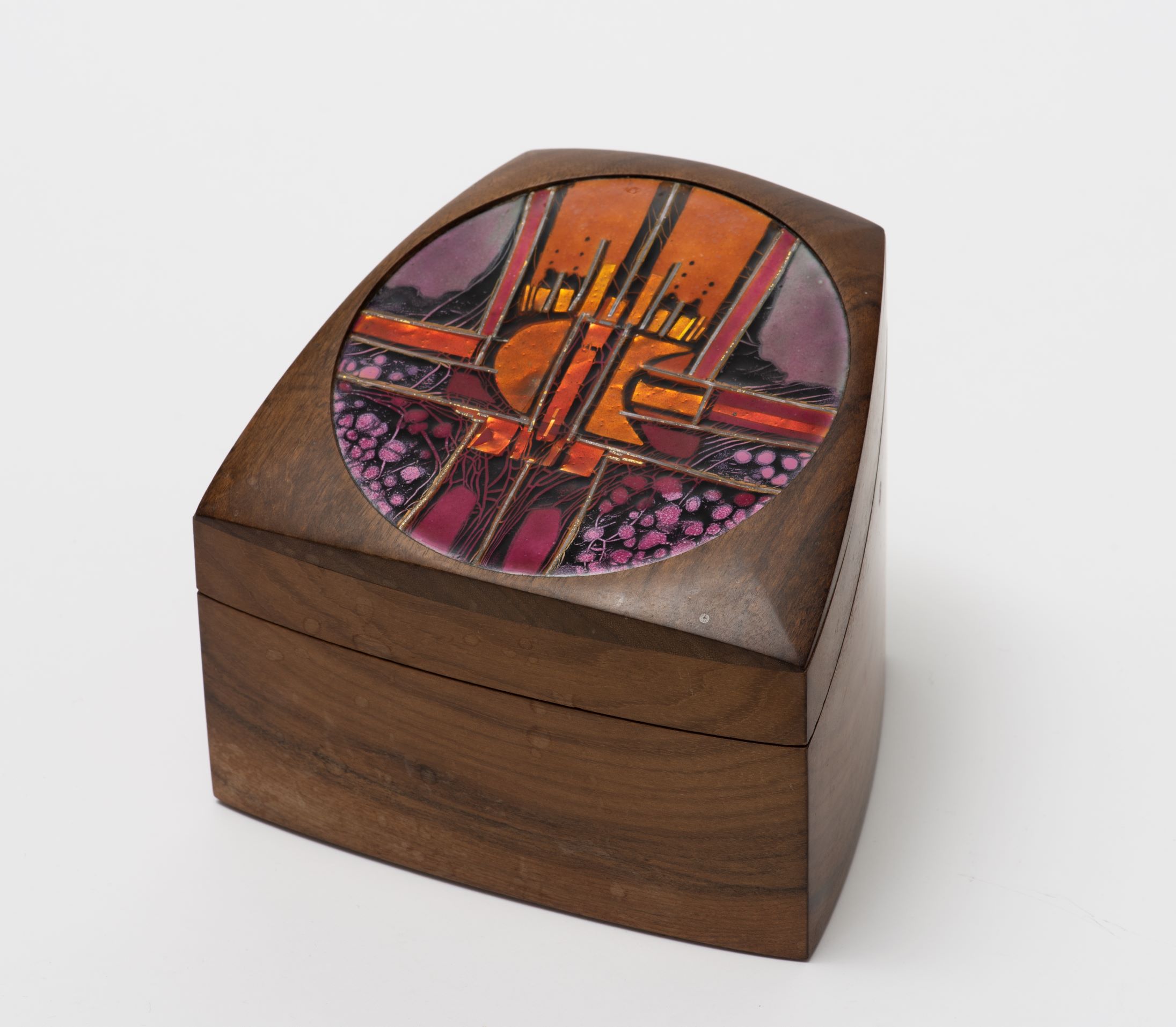Walton on Lancaster
Robyn Walton has a special interest in decorative arts made in our region. As a volunteer researcher on CAM's decorative arts collection, Walton met up with highly-productive crafts-person and painter Jan Lancaster to speak about her work in the CAM collection. This type of collection-based research is highly valued, not just for a deeper understanding of our collection, but for increasing the archive of knowledge of Australian art and artists. This Reflection follows on from Walton's previous study on Stanley Ellis.

Castlemaine resident Jan Lancaster had a distinguished career as a craftsperson; cheifly specialising in enamels in the 1970s and 80s, before turning her hand to painting. CAM is fortunate to have a collection of Lancaster’s enamelled objects, donated by the artist, which are on permanent display in the museum alongside a collection of metalwork and enamel by local crafts teacher and maker Stanley Ellis.
This side-by-side placement of the two collections prompts the observation that enthusiasm among artists and the public for crafts has come in waves and has had aesthetic, ideological, spiritual, and commercial aspects.
Ellis represents the early decades of the twentieth century, with Arts and Crafts, Art Nouveau, and early Art Deco influences from the Northern Hemisphere evident in his shaping and ornamentation of small, marketable objects such as platters and vases. Lancaster represents the crafts revival that began in the late 1960s, producing a diversity of hand-crafted items for domestic use, personal wear, and décor and inspiring mass-produced copies on a massive international scale. In both waves of crafting, makers expressed - through their processes and finished works - beliefs and aspirations to do with natural materials, alternative lifestyles, and spirituality.
Jan Lancaster visited CAM and generously sat with me beside the Lancaster collection sharing background information about the objects. After this meeting, I chose the wooden cigar box with its enamelled copper inset (dated 1980) to feature in this Reflection because it nicely shows off an innovative technique as well as two sets of craft skills in functional collaboration.
The box was made by master woodworker Alan Wale OAM (1929-2016), who specialised in handcrafting and favoured Australian timbers. Wale was a founder of the Woodworkers Association of NSW and the Sturt School for Wood in Mittagong, NSW.
Lancaster studied art in the 1960s at the National Art School, East Sydney. She subsequently presented work in solo and joint exhibitions and had her works acquired for public and private collections in Australia (including Government House, Canberra) and overseas. By 1980 she was renting studio and sales space in the Argyle Arts Centre in The Rocks, Sydney and was highly productive. After meeting Wale when they both served on the NSW Crafts Board, Lancaster asked him to make her a range of boxes suitable for enamelled inserts.
A significant feature of the cigar box insert was that it was cloisonné, Lancaster pointed out to me. And in place of the usual rolled wire divisions between segments she had experimented with using flattened silver. In 1980 she was not aware of any craftsperson in Australia using this technique; possibly she had heard of a few people in America using flat silver earlier than she had, but in essence she was on her own in trying this material.
The multi-coloured, multi-segmented piece required many applications of enamel and many firings, in the classic cloisonné method. Texture had been created in a final black enamel application.
As for the abstracted design, Lancaster did not offer an interpretation beyond saying it had begun as a cross, a symmetrical shape she liked and had later used in paintings.
It was possible to detect a mystical dimension in this work and others, Lancaster conceded. She had been a follower of Zen Buddhism, and although she no longer adhered to a traditional faith or spiritual practice - feeling the most important thing was oneness with the environment - she had used emblems from various religions in her art. She had also used colours associated with faith, especially a deep blue; although in this panel for the cigar box lid she uses vivid reds, oranges, mauves, and pinks.
Over the years, Lancaster said, the spirituality infusing her work and the visible influence of stained glass had attracted clients with religious affiliations. Objects such as goblets had been bought for seminaries. Also, East Asian clients had found congenial qualities in her crafted works, with Japanese companies and individuals quite often acquiring the inlaid boxes to keep or give as gifts.